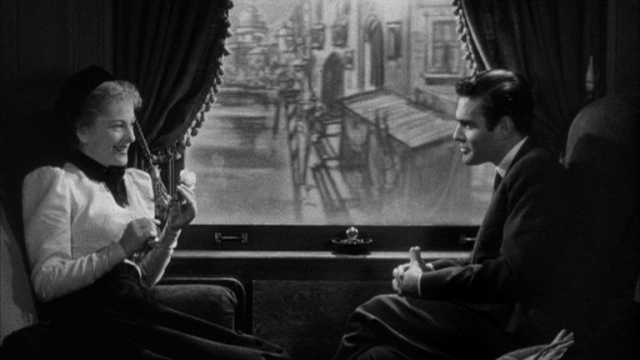Stefan Zweig’s 1922 novella Brief einer Unbekannten is one of those stories that has inspired adaptations all over the world – there are Greek, Mexican, French, Chinese and Mongolian (!) films officially based on it, a lost silent adaptation, at least a couple of films that borrow the story without crediting the author and even a Russian opera. Reading the story in preparation for this article, it was immediately clear why it has been so widely adapted – it’s a beautifully tragic, romantic tale that provides a perfect hook for a filmmaker, but leaves details vague (and dreamy!) enough that a screenwriter can swoop in and put their own stamp on it.
The story can be outlined in just a few sentences: A womanising minor celebrity receives a letter from a dying woman; a forgotten lover, and mother to a child he did not know existed. In her final hours, she tells her life story, and he is forced to confront the consequences of his life of privilege and pleasure. The book – and the 1948 adaptation by screenwriter Howard Koch and director Max Ophüls – place this story in turn-of-the-century Vienna, but it feels universal and timeless. The framing device of the letter throws the tragic elements of the story into place straight away, allowing the viewer (or reader) to spend the rest of the story swooning desperately and frequently as the rest of the tale unfolds.
The story within the letter opens with Lisa, a shy teenage girl, becoming infatuated with her new neighbour, Stefan Brand. Even before she has seen his face, she finds herself fascinated by his stylish possessions as they are carried into his house, and the music that drifts from his window as he practices for his next concert. When they do finally meet by chance in the courtyard of their shared building, his charm stokes the fires of her passion… and when Lisa’s mother remarries and takes her away from Vienna, it only seems to intensify her secret passion. At the first opportunity, she seeks work back in the city, just to be closer to the man she loves.
Eventually managing to engineer a “chance” meeting with Stefan – via the ancient art of “hanging around outside his house for ages” – she is swept off her feet in a whirlwind of romance. But what feels like the most important moment in her life is just another evening with yet another pretty young woman to Stefan, who knows all of the places to go and people to talk to create a once-in-a-lifetime experience for his date – even if he has practiced each move over and over again. He promises to contact her as soon as he returns from a concert in another country, but of course he never does.
Years later, they meet one more time. For Lisa, years of heartache rise to the surface and she throws away the new life she has made for herself and her son, convinced that Stefan has now seen that they are destined to be together… but he has simply changed his act, and once again their shared history is completely one-sided. It is only the letter, the dying words of the Unknown Woman, that finally stirs Stefan’s faded memories of a person he barely knew, but whose life was tilted completely onto a different axis by his actions.
The first time I saw this film, three years ago, I was bowled over by the tragic, romantic story, and by Ophüls’ stylish direction. Rewatching it for the first time, and with the source material fresh in my mind, I could see a few cracks… even Joan Fontaine’s strong performance can’t quite make the opening scenes, in which Lisa is supposed be about 13 years old, entirely believable; the scenes in which a bland soldier attempts to court Lisa before she escapes back to Vienna don’t feel like they have much dramatic momentum, even if Ophüls delights in tracking shots through scenic village squares. But other scenes struck me more powerfully – Louis Jourdan’s flashy musician offers the perfect blend of charm and emptiness, his carefully staged romance being irresistible even with his less-than-honorable intentions exposed.
I also found the changes from the novella bouncing around in my head as I watched. Koch’s screenplay gives the characters names for obvious reasons, and shifting Stefan from writer to piano prodigy allows for some beautifully musical scenes, with Jourdan doing an impressive job of looking like he’s really playing – something I always appreciate in films about musicians! Other changes, no doubt dictated by the Hays Code, carry a mixed blessing. The source material is fairly risqué, and in some ways the film suffers for not being able to fill out the darker side of Lisa’s life as an early 20th-century single mother. But Koch and Ophüls find compelling, subtle ways to hint at the darkness they can’t show onscreen and by the end, the full depth of the tragedy is felt.

